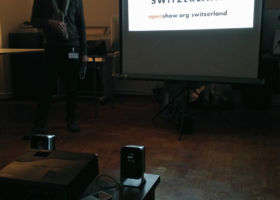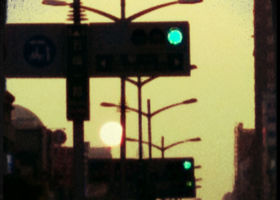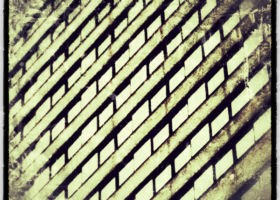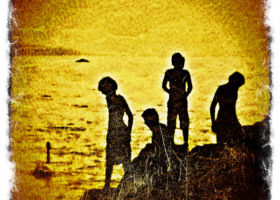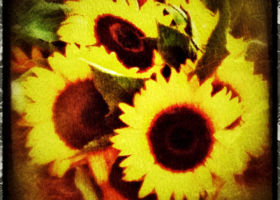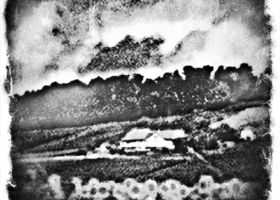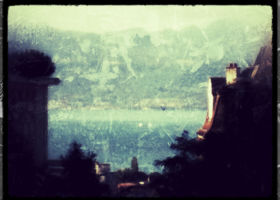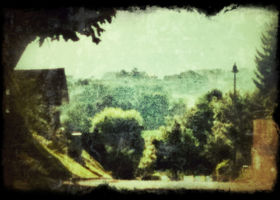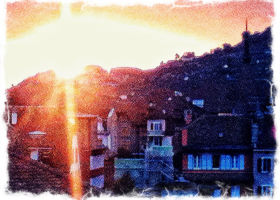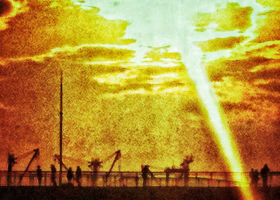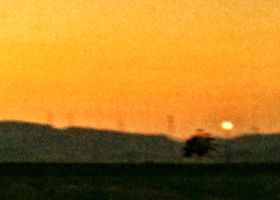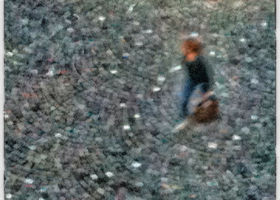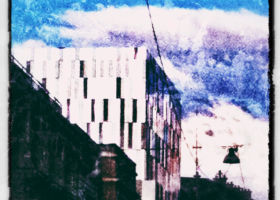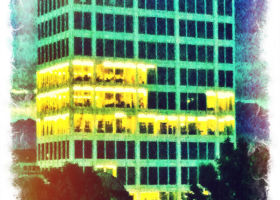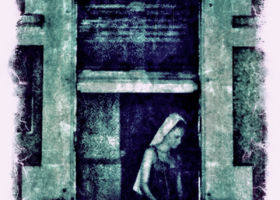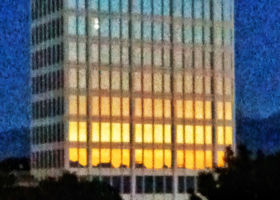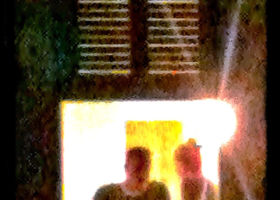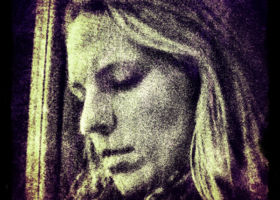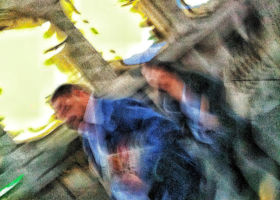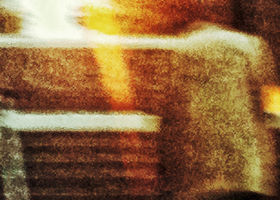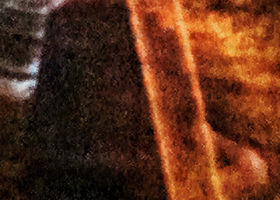C’est au Musée de l’Élysée que s’est déroulée la dernière séance de l’Open Show 2013. C’était également l’occasion de célébrer les deux ans de ce mouvement introduit en suisse avec brio par Mathieu Grandjean. À cette occasion, nous avons pu voir les très belles expositions Genesis de Sebastião Salgado et State de Paolo Woods.
La revue Open Show 2013 reprenant l’ensemble des travaux exposés au publics lors des présentations en 2013 est désormais en vente. S’y trouve une sélection de mon travail sur la matière numérique et un résumé des textes d’accompagnement.
Is at the Musée de l’Élysée held that the last session of the Open Show 2013. It was also an opportunity to celebrate two years of this movement introduced in switzerland brilliantly by Mathieu Grandjean. On this occasion, we could see the beautiful exhibitions Genesis of Sebastião Salgado and State de Paolo Woods.
The magazine Open Show 2013 containing all the works exhibited in public at presentations in 2013 is now on sale. Is there a selection of my work on the digital matter and a summary of the accompanying texts.
Un résumé des textes ci-dessous a été publié dans la revue Open Show Switzerland 2013. Auteur: Marcol
Part of texts below was published in magazine Open Show Switzerland 2013. Author: Marcol
Biographie en français
Tour à tour architecte, photographe, infographe et enseignant, Marcol navigue entre poésie et théorie, dans le dialogue entre la pratique sensible des arts et le développement conceptuel de leurs rapports au monde. Depuis un quart de siècle, Marcol arpente les chemins des photographies argentique, numérique et de synthèse. Il explore la substance de l’image photographique entre le réel et ce qui en est vu; entre la matière physique du monde et la fable que conte chaque image.
Le rapport au réel n’étant que circonstanciel, pour Marcol l’image photographique est non seulement porteuse d’un imaginaire s’affranchissant du temps et du lieu de la prise de vue, mais elle acquiert elle-même une matérialité qui participe à son expression. L’image est ainsi augmentée par un travail sur la transparence et le reflet du support; le cadre comme contexte immédiat; les qualités spatiales et lumineuses d’une exposition; les caractéristiques physiques d’une publication; etc. Marcol inclut également dans son travail sur la matérialité photographique, le processus de la prise de vue, qui, par ses limites, marque et révèle la matérialité de l’image.
Biography in english
Alternately architect, photographer, graphic designer and teacher, Marcol navigates between poetry and theory, in the dialogue between the sensitive practice of arts and the conceptual development of their relationships with the world. Since twenty-five years, Marcol walks the paths of analog, digital and synthesis photographies. He explores the essence of the photographic image between reality and what is seen from it, between the material world and the fable each image tales.
The relationship to reality being only circumstantial, for Marcol the photographic image is not only a carrier of imaginary freeing from time and place of shooting, but possesses also a materiality contributing to its expression. Image is thus empowered by working on the transparency and the reflection of the base; the frame as the direct context; the spatial and lighting qualities of an exhibition; the physical characteristics of a publication; etc. Marcol also includes in his work on the matter of photography, the process of shooting, which with its limits, marks and reveals the matter of image.
Présentation en français
La photographie numérique n’est pas une chose virtuelle perdue dans le «nuage». Elle nécessite une matière physique pour exister: l’appareil photographique avec, au minimum, un objectif pour faire converger les rayons lumineux et un capteur par prendre trace de ces rayons. Ce capteur n’est plus physico-chimique comme en photographie argentique, mais électro-computationnel. La photographie numérique nécessite donc un processus technologique matériel et logiciel qui s’inscrit dans le monde réel. Ce qui implique, bon gré mal gré, des limites technologiques, inhérentes ou arbitraires. Quand le processus est poussé jusque dans ses limites, apparaissent alors des artefacts qui ne sont autres que les indices de ses limites. Et ces indices deviennent une matière poétique photographique. La photographie argentique nous a habitué à certains artefacts: vignettage, aberrations optiques, chromatiques, géométriques, flares, flou de focus, flou cinétique, bokeh, etc. Artefacts propres à quasi tout appareil photographique. Mais aussi à d’autres: grain, griffures, réticulation, etc.; artefacts propres aux capteurs argentiques. La photographie numérique apporte aussi son lot d’artefacts: pixels, dérives chromatiques, compression non conservative, etc. Ces artefacts, ces indices, sont la matière numérique dont sont faites les images de Marcol.
L’ensemble des images de la série Matière Numérique forme donc un essai photographique sur le potentiel artistique des outils numériques de la photographie contemporaine. Pour être plus précis, ce travail s’inscrit dans la recherche sur le potentiel artistique du processus technologique du médium photographique. Entre la réalité et ce que la photographie en donne à voir, réside la machinerie de la prise de vue: l’appareil photographique constitué de matière physique et d’algorithme numérique. Le potentiel artistique, hors du sujet photographié, se situe donc dans les limites des constituants de l’appareil photographique.
D’une certaine manière ce projet interroge aussi la tentation hyperréaliste de la photographie. Depuis l’invention de la photographie, une course à la perfection technique a été instaurée pour s’abstraire de la présence matérielle du processus: des temps de pose de plus en plus courts, des optiques de plus en plus claires, des grains de plus en plus fins, des couleurs de plus en plus vraies, des pixels de plus en plus nombreux. C’est vouloir rendre invisible l’appendice incontournable de la prise de vue pour ne conserver que des images aussi fidèles que possible à ce que nous rêvons d’avoir vu. Même si, une fois faite, l’image ne s’est toujours pas affranchie de la matière car elle n’existe pas sans son support matériel, même si celui-ci est une projection de lumière. Cette volonté conduit à l’hyperréalisme; un réalisme semblant plus réaliste que le réel. Mais à trop pousser à l’hyperréalisme, l’imagination se meurt.
L’intérêt de l’imprécision photographique est de laisser l’imaginaire faire une partie du chemin vers l’image mentale et poétique que permet l’art photographique. Le grain, la rayure, le décalage des couleurs, les dispersions optiques, etc. rendent non seulement perceptible la matière de l’appendice mais ouvrent à l’imaginaire car tout n’est pas montré, certains pans sont à recomposer par le processus du regard. Le travail poétique sur les indices de cette matière permet une photographie où même le réel perd de son importance. La photographie diverge de sa fonction documentaire pour devenir un art abstrait du réel.
En photographie numérique, il est tentant de reproduire ces effets «pittoresques» de la photographie analogique, afin de conserver une certaine distance entre le réel et l’imaginaire. Les images de la série Matière Numérique s’inscrivent dans une démarche expérimentale. De ce fait, les effets de post-traitement s’amenuisent dans l’évolution de la série pour laisser le plus de place possible aux indices des spécificités technologiques de la photographie numérique. Pour essayer de proposer une poétique de l’image par l’unique façonnage de la matière numérique de la photographie.
Presentation in english
Digital photography is not a virtual thing lost in the “cloud”. It requires physical matter to exist: the camera with at least one objective lens for converging light rays and a sensor to keep trace of these rays. This sensor is not physico-chemical as in conventional photography, but electro-computational. Digital photography therefore requires a hardware and software technological process that is part of the real world. This implies, willy-nilly, inherent or arbitrary technological limits. When the process is pushed into its limits, then appear artifacts that are none other than the index of its limits. And these indices become a poetic photographic matter.
Analog photography has accustomed us some artifacts: vignetting; optical, chromatic, geometric aberrations; flares; defocus; kinetic blur; bokeh; etc. these artifacts are inherent to almost any photographic apparatus. We are also accustomed to other artifacts like grain, scratches, cross-linking, etc., which are specific analog sensor artifacts. Digital photography also brings a lot of artifacts: pixels, chromatic aberrations, not conservative compression and so on. These artifacts, these indices are the digital matter that makes up Marcol’s images.
The set of images of the series Digital Matter is a photographic essay on the artistic potential of digital tools of contemporary photography. To be more precise, this work is part of the research on the artistic potential of the technological process of the medium as photography. Between reality and its representation by the photography lies the machinery of the shooting: the camera made of physical matter and digital algorithm. Consequently, the artistic potential beside the photographed subject lies in the limits of the components of the camera.
Somehow this project also questions the hyperrealism temptation of photography. Since the invention of photography, a race to the technical perfection was introduced to abstract the physical presence of the process: exposure times are made shorter and shorter, optical lenses are made clearer and clearer, grains always finer, the colors become truer, there are more and more pixels, etc. These attempts are to make invisible the unavoidable appendix of the shooting to keep only as faithful as possible to what we dream of having seen. Although once made, the image is still not free from the material because it does not exist without its material base, even when it is a projection of light. This will lead to hyper-realism, a more realistic than the real pretend realism. But push too much towards hyperrealism, imagination dies.
The interest of the photographic inaccuracy is to leave imagination part of the way towards the mental and poetic image that photography enables. Grain, stripe, color shift, optical dispersion, etc. not only allow the material matter in the appendix to be visible but they also open the door to imagination. It’s because everything is not shown, some parts are to be reconstructed by the process of viewing. the poetic work on the indices of this matter makes a photograph possible where even the real loses its importance. Photography derives from its documentary function to become an abstract art of reality.
In digital photography, it is tempting to reproduce the « picturesque » effects of analog photography to maintain a certain distance between the real and the imaginary. The images of the series Digital Matter are part of an experimental approach. As a result, the effects of post-treatment are dwindling in the evolution of the series to leave as much space as possible the indices of technological characteristics of digital photography. In an attempt to offer a poetic image of the unique shaping of the digital matter of photography.






